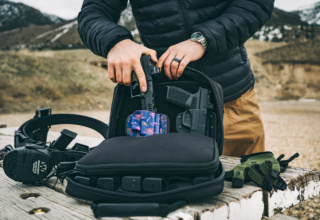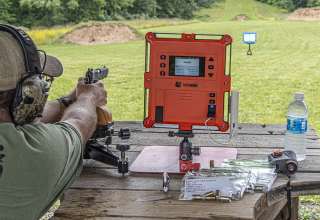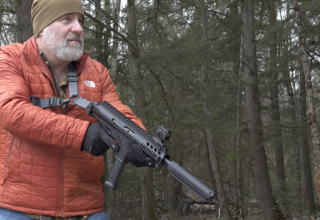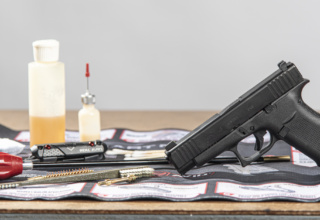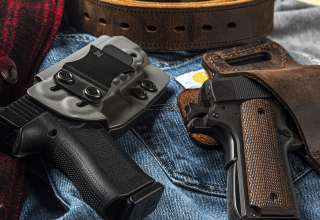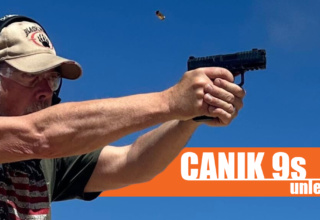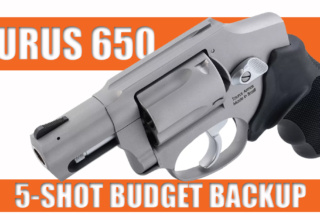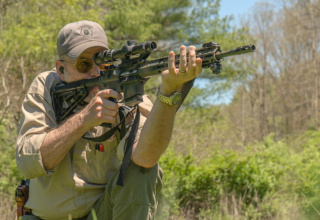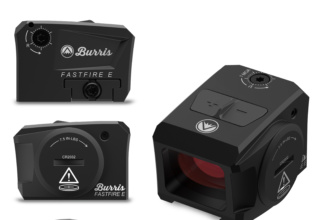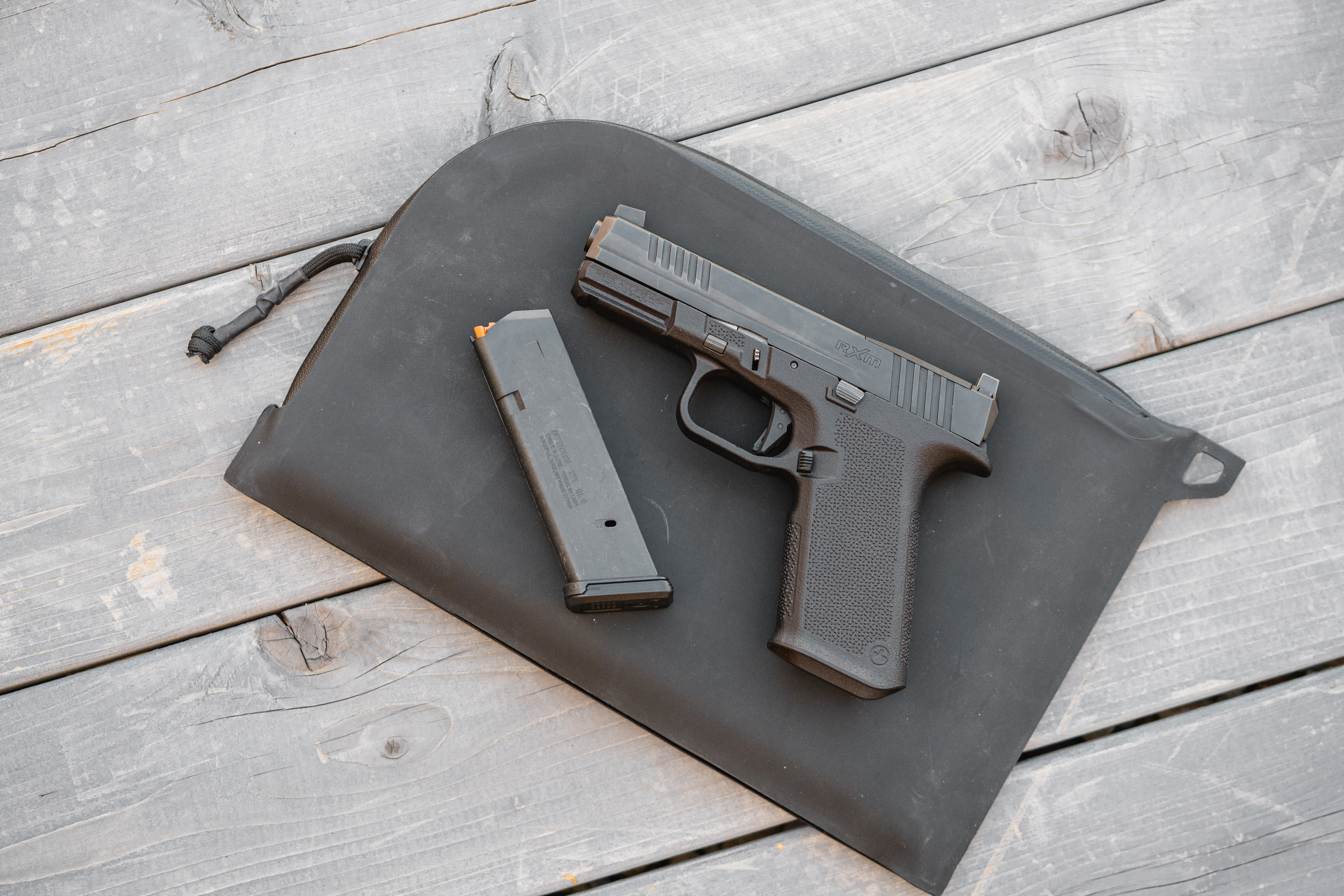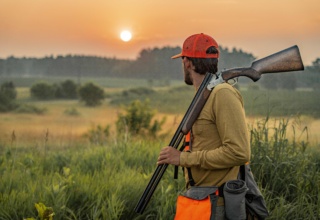Gun manufacturers love to tout their ergonomic designs and the benefits thereof. But how much of a difference does ergonomics really make?
by Robb Manning
When there’s talk about which concealed carry handgun is best for a shooter, you often hear about handgun “ergonomics” and how some people’s physiology fits better with some handguns than it does with others. Some people find that a certain handgun “just naturally goes” to attain a good sight alignment. There’s often opposing views on the subject, and the discussion sometimes turns to how important ergonomics are.
What Does Ergonomics Even Mean?
I’ve seen many different opinions on what is considered ergonomics when it comes to handguns. Grip angle and how the grip fits in your hand are always considered, but not everyone includes the placement of fire controls. According to Merriam-Webster, ergonomics is defined as: “an applied science concerned with designing and arranging things people use so that the people and things interact most efficiently and safely.” So, by definition, a discussion of handgun ergonomics should include every aspect of how the shooter interacts with the handgun. Trigger pull, the sights, length of pull, grip size, grip angle, position of the safety, slide stop, and magazine release are all factors in ergonomics.
Of course, ergonomics can be important — especially if you’re new to handguns and are looking to make your first purchase. But ergonomics are also overstated. It’s not the end-all-be-all. I believe that a person can train their way out of just about any obstacle or imperfection, including less-than-optimal ergonomics. A far more important factor in choosing what you carry for personal defense is training and the level of familiarity that you have with a handgun. (The most important factor overall in choosing a handgun is reliability, but that’s not in the scope of this article).

Here’s an example: A fictional individual from a fictional country has been in the military for 10 years. During the 10 years of service, this individual trained with the issued handgun at a minimum of once per week. Some weeks the training is dry fire; some weeks the training is live fire at the known distance range; some weeks it might be combat scenarios using live fire shoot-and-move. After 10 years, the handgun is like an extension of this individual’s hand, and he’s very proficient at shooting it. The handgun model that this military issues has been around for almost 60 years, and it’s an outdated design from the previous dictator’s brother-in-law and has a terrible trigger and is not very ergonomic. But…it’s still used because it’s very reliable.
This individual now decides to get out of the military and wants to purchase a handgun for personal defense. In his country, there’s a strong likelihood that he will use the gun to protect himself. Incidentally, ammo is expensive and not that readily available for purchase by civilians. He has a choice of purchasing an imported modern handgun with all the associated features, such as good trigger and ergonomics, or purchasing a handgun that is the same model he’s been using for the last 10 years. On one hand is the handgun that is in all regards a better handgun, yet he has never even shot it and will likely not be able to gain much experience with it due to limited ammo. On the other hand is the handgun that’s not that great, but it is reliable and he knows it like the back of his hand.

The choice for him should be an obvious one. Stick with what you know. If, when I got out of the Marines, I was going to carry a handgun for self-defense, I would have naturally gravitated towards a Beretta 92 (or more likely a compact version) because I really knew the M9 and had a lot of experience with it. (Unfortunately, concealed carry was illegal at that time in my state). If you ask me what I carry now, I’d tell you I carry a GLOCK. After writing a GLOCK book (Gun Digest GLOCK Reference Guide, Gun Digest) and then the 2nd Edition, I’ve put more rounds through GLOCKs than any other handgun, including the M9 I was issued. I am more familiar with it than any other handgun I’ve ever used.
Training
Training with and knowing your handgun can overcome deficiencies in ergonomic design. And by training, consistency and quality of training are imperative. Plinking cans on a random Saturday afternoon is not training. It is hands-on time that’s better than not shooting at all, but it’s not training. Training is deliberate, with a specific goal in mind, and it requires consistency.

For example, I love martial arts. I trained for years, going to class every Monday and Wednesday with sparring on Friday nights. I rarely ever missed a class, and I progressed very fast; however, the last three years I’ve had a string of injuries (resulting in four surgeries for five different body parts) that have hindered my consistency, often precluding me from going to class for months in a row. My progression has come to a standstill.
Consistency matters.
While I believe training can overcome deficiencies, I’m not saying that ergonomics don’t matter at all because they certainly can make a difference. I’ve read articles from writers that believe ergonomics have no bearing whatsoever, one even going so far as to say it’s a sham or a myth. They believe as an absolute that if you can’t shoot a gun well, you’re not training enough.

I wonder how many of these opinions come from writers who are of average height and build, and/or are competitive shooters. Handguns are designed for people of average size, especially when it comes to hand size. The length of pull, grip size, and distance between the controls are all factors in this, and the more a person’s size deviates from average, whether it be larger or smaller, the more ergonomics come into play. It is more of a factor for smaller people, because while a larger person can at least scrunch their hands and fingers to work the controls of a small pistol, a small person can’t stretch their finger to reach the trigger properly. No amount of training will make their finger stretch farther. Yes, with training they can learn to shoot the too-big handgun good enough, but will they ever be able to shoot it well? It’s a lot tougher to do that.
The other thing. It’s easy for competitive shooters to say that if you can’t shoot a gun well, then you’re not training enough because they train/shoot a lot. The vast majority of shooters don’t have that much time or resources (ammo) to train like a competitor. I don’t know if it’s still true the way police department budgets have been strained in recent years, but a few years back the average police officer in the US qualified at the pistol range once or twice per year, must qualify and practice on their own time, and must shoot 100 rounds per year. That’s definitely not enough training to overcome any deficiency.

The thing is, modern handguns have, at the least, decent ergonomics. No sweat. It’s easy to get some training and trigger time to overcome deficiencies. But I have a couple of guns from the pre-WWII era that are so un-ergonomic that they hurt my hand to shoot. No amount of practice will overcome this, and the more I shoot them the worse it gets.
The CZ Vz 24 and Vz 38 are two that come to mind. Both have bad ergonomics, but the Vz 38 is the worst-shooting handgun I’ve ever fired. A .380 ACP out of a handgun larger and heavier than a 1911 should be nice to shoot, right? Hardly. The grip angle is terrible. It’s almost L-shaped. The hand rests on the grip so low that the muzzle flip is horrific. The magazine baseplate, made of thin steel (with sharp edges), extends a quarter inch to the front, which, no matter how you place your hand, cuts into your finger. Your hand is crunched between that baseplate and the trigger guard (also of relatively thin steel), which is also uncomfortable.

Perhaps you could argue that people were smaller back then and thus hand size was smaller. You could argue that, except despite being chambered in .380, the length of the grip fore to aft is slightly longer than the grip on the Ruger-57 chambered in 5.7×28. It’s not a great experience shooting it, and maybe if I had smaller hands — and no sense of touch in my hands — it would be better to shoot. Of course, I wouldn’t advocate using this as a carry gun. I’m just using it as an extreme example to make my point. But the Vz 38 was military issue at the time, so people did carry it for self-defense at one point.

There is another point to make so as not to completely dismiss ergonomics. Bear in mind that ergonomics isn’t just about making a gun shootable, but it’s also about allowing a person to shoot better: more consistently accurate and faster. One example to support this point is the SIG Sauer P365. I don’t know what hocus-pocus went into designing the P365, but the first time I fired it, I was amazed. It’s a micro-compact that shoots like a compact handgun. The excellent ergonomics make it even better to shoot than it should be for a gun that size.
Factors That Make Ergonomics
Ergonomics shape many factors of how we interact with the gun, and if there’s one that would be most important, it would be pointability.
When I test the pointability of a handgun, I assume a shooting stance with the gun pointed towards the ground and my arms straight. I close my eyes and, holding the empty handgun in a comfortable manner, I raise it to where I imagine the sights are aligned perfectly on the target and my eyes are looking down the sights. (Of course, it is understood that this should be done with a safe/cleared gun pointing in a safe direction). Then I open my eyes and see how the gun is truly pointed and I take note. Are the sights aligned? Are the sights on target? Is my dominant eye looking down the sights properly? It’s normal for it to be off at least a little bit. The handgun might be pointed up slightly or pointed down. It might be too low to align with my eyes, or maybe too high.

I’ve done this with dozens of handguns, and I’ve only found one that points perfectly or near perfect every time — the FN pistols (FNS-9 and 509). Every other handgun has varying degrees of how well it points for me. And I do stress for me because it’s going to be different for everyone. As one example, the 1911 has a high bore axis compared to what I’m used to shooting. So, when I close my eyes and do this with a 1911, the sight alignment is higher on the target than it should be.
Regardless of how important ergonomics are, the most important factor when choosing a self-defense handgun, over all else, is reliability. It’s more important even than accuracy, in my opinion, because you’re likely going to be close in a self-defense situation. This is extreme, but I think I’d rather have a reliable .22 pistol than a .45 that might or might not work. If your handgun fails, you’re dead. It’s as simple as that.

Conclusion
The importance of ergonomics is often overstated, but it’s important to not diminish its role and neglect to factor it in at all. The more experience a shooter has with handguns and the more training they do, the less of a factor ergonomics becomes. Also factoring in that the farther a shooter gets from the “average size,” especially regarding hands and especially when the size gets smaller, the more of a factor ergonomics plays.
Ergonomics is not that important to me, but it would be egotistical and erroneous to say it is not important to other shooters because everyone has a different physiology and different experience levels. Who’s to say? Maybe I’d be a better shooter if I were more concerned with ergonomics in my handgun selection.
- TESTED: Beretta PMXs 9mm Pistol - July 26, 2024
- The Correct Way to Clean a GLOCK - January 15, 2024
- Concealed Carry Guns: How Important is Ergonomics? - December 11, 2023


